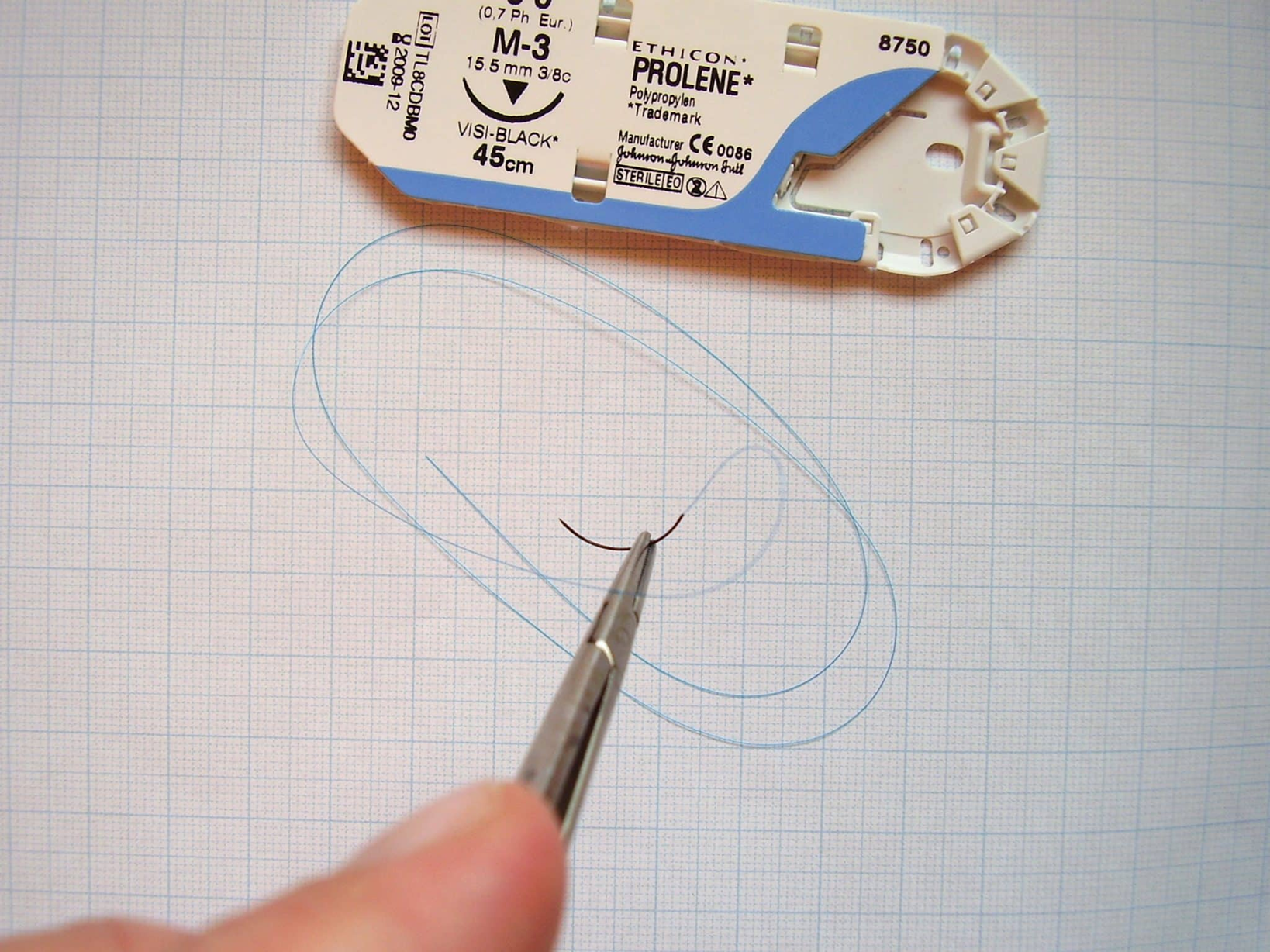Medical sutures, commonly known as stitches, are a vital tool in surgical and wound care. They ensure proper wound closure, facilitate healing, and minimize the risk of infection. With advancements in medical science, a wide variety of sutures have been developed to meet the needs of different tissues and surgical procedures. In this article, we explore the main types of medical sutures and their applications.
Classification of Medical Sutures
Medical sutures can be classified based on several factors, including their material, absorbability, structure, and coating.
1. Based on Absorbability
- Absorbable Sutures:
These sutures are broken down by the body’s natural processes over time, eliminating the need for removal. They are commonly used for internal tissues that heal quickly.- Examples: Catgut (plain and chromic), polyglycolic acid (PGA), polydioxanone (PDS), and poliglecaprone (Monocryl).
- Common uses: Internal wound closures, gynecological procedures, and pediatric surgeries.
- Non-Absorbable Sutures:
These sutures are not broken down by the body and must be manually removed, or they may remain permanently in cases like cardiovascular surgery.- Examples: Silk, nylon, polypropylene (Prolene), and polyester.
- Common uses: Skin closures, cardiovascular surgeries, and orthopedic procedures.
2. Based on Material
- Natural Sutures:
Made from natural materials, these sutures are biocompatible but may cause more tissue reaction than synthetic options.- Examples: Catgut (derived from animal intestines) and silk (derived from silkworms).
- Synthetic Sutures:
Manufactured from man-made polymers, these sutures offer predictable absorption rates and reduced tissue reactions.- Examples: Polyglactin 910 (Vicryl), polydioxanone (PDS), and nylon.
3. Based on Structure
- Monofilament Sutures:
These are made from a single strand, offering a smooth surface that reduces tissue trauma and resists bacterial colonization.- Examples: Nylon, polypropylene (Prolene), and polydioxanone (PDS).
- Multifilament Sutures:
Composed of multiple braided or twisted strands, these sutures provide better knot security but may harbor bacteria in their interstices.- Examples: Silk, polyester, and polyglactin 910 (Vicryl).
4. Based on Coating
- Coated Sutures:
These sutures are treated with special substances to reduce friction, improve handling, and minimize tissue drag.- Example: Coated Vicryl.
- Uncoated Sutures:
These sutures do not have any added coating, making them more cost-effective but sometimes harder to handle.
Common Types of Sutures and Their Applications
- Catgut Sutures:
- Made from natural collagen.
- Absorbable, with plain catgut absorbing in 7-10 days and chromic catgut in 20-40 days.
- Used in gynecological surgeries, dental procedures, and subcutaneous closures.
- Silk Sutures:
- Non-absorbable and made from natural silk.
- Commonly used for skin closures and securing medical devices.
- Nylon Sutures:
- A synthetic, non-absorbable monofilament material.
- Ideal for skin closures due to its smoothness and minimal tissue reaction.
- Polyglactin 910 (Vicryl):
- A synthetic, absorbable multifilament suture.
- Often used in general surgery and gynecological procedures.
- Polydioxanone (PDS):
- A synthetic, absorbable monofilament suture with prolonged absorption (up to 180 days).
- Suitable for deep tissue closures and pediatric surgeries.
- Polypropylene (Prolene):
- A synthetic, non-absorbable monofilament.
- Commonly used in cardiovascular and plastic surgeries.
Choosing the Right Suture
The choice of suture depends on various factors, including:
- Tissue Type: Fragile tissues like intestinal walls require absorbable sutures, while skin closures often use non-absorbable ones.
- Healing Time: Absorbable sutures are used when tissues heal quickly, while non-absorbable sutures are preferred for long-term strength.
- Risk of Infection: Monofilament sutures are often chosen to minimize the risk of bacterial colonization.
Conclusion
Medical sutures are a cornerstone of modern surgery, with a wide range of types tailored to specific procedures and tissues. Understanding the properties and applications of different suture materials helps medical professionals select the best option for optimal healing and patient outcomes.
Whether you’re a healthcare professional or a curious reader, exploring the world of sutures reveals the intricate balance of science and skill in medical care.



Leave a Reply